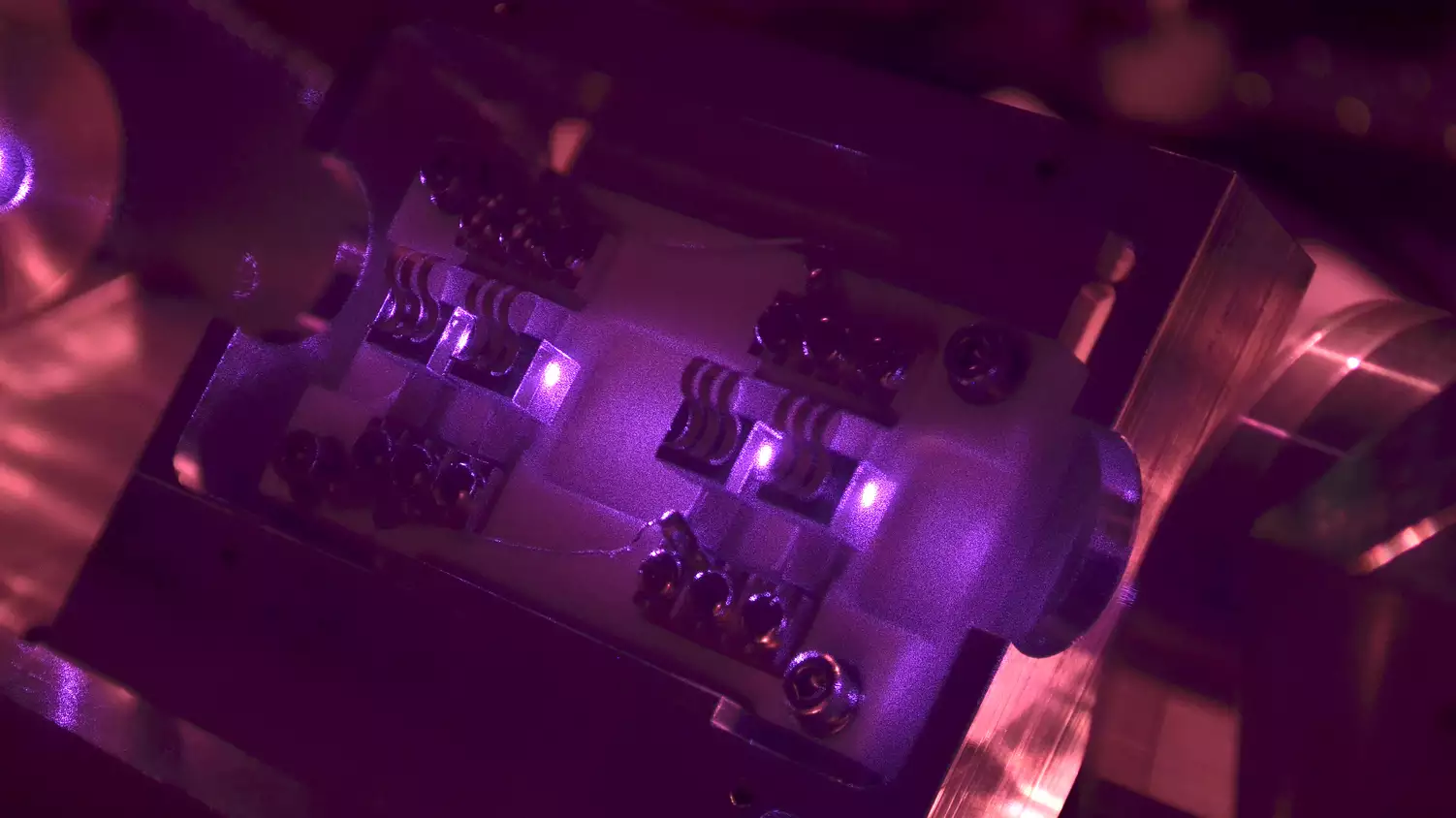Astronomy has entered the age of gravitational waves. While there are plenty of differences between gravitational wave astronomy and typical waves of the electromagnetic spectrum, they share one similar feature: frequency. While we have detectors for a wide range of electromagnetic frequencies, gravitational wave detectors only focus on a narrow band of relatively low-frequency signals. That will change with the upgrade of the GEO600 gravitational wave detector located at the Max Planck Institute for Gravitational Physics.
So, what different signals should we expect at higher frequencies of gravitational waves? LIGO, Virgo, and KAGRA, three of the most famous gravitational wave detectors, focus on frequencies between 10 Hz and 6000 Hz. This has allowed them to detect 90 confirmed signals, with another 200 potential signals awaiting confirmation. These relatively low frequencies will enable them to detect gravitational wave signals between some combination of black holes and neutron stars. In theory, at least, rotating neutron stars and some types of supernovae would also show up in this frequency range, but that has yet to be confirmed.
GEO600, on the other hand, is being upgraded to detect signals up to a million Hz (or a megahertz or MHz for those more familiar with that terminology). The oscillations are orders of magnitude faster than the ones detected by its sister gravitational wave detectors. One of the more intriguing potential sources is a cloud of ultra-light bosons that could represent dark matter spinning around a black hole, in a process known as "black hole superradiance". Other potential sources include mergers of primordial black holes, which are much smaller than the supermassive ones typically detected by other observatories, as well as mergers of as-yet-unknown compact objects that could be made of a material not currently known to science.
Fraser talks some science about even larger gravitational wave detectors
That's all very intriguing, but what upgrades are actually needed to make these observations? Every gravitational wave detector, including GEO600, is composed of two primary elements—a laser and a detection system. Previously, the GEO600 had a relatively low-power laser and a detection system that could only take samples at 16 kHz. The upgrade plan involves upgrading both of those subsystems to the next level.
GEO600's existing laser is an Nd:YAG laser that operates using a crystal of yttrium, aluminum, and garnet (YAG) doped with neodymium (Nd). Its operating output power was around 12W, making it about 1/10 the power of the power injected into other gravitational wave detectors like LIGO and VIRGO. However, since August 2024, it has operated with an updated laser amplifying system that provides 70W of power, a significant improvement. It also operates using a technique called power recycling, which is used through most gravitational wave detectors, and upcycles the actual power used for detection into the 10kW range, at least for the old 12W laser - it's unclear how much effective power output is happening inside the machine with the newly upgraded one.
All that power has to go somewhere - and in GEO600's case, that somewhere is a data acquisition system (or DAQ). Previously, the DAQ at the GEO600 could sample at a respectable 16 kHz. However, to catch signals at a frequency of 1 MHz, it would need to be able to capture data at least two times that frequency due to a sampling requirement called the Nyquist criterion. The new GEO600 DAQ goes ever past that, taking samples at a blistering 4 million times per second - well faster than is needed to detect 1 MHz signals.
Video explaining the GEO600 gravitational wave detector.
Credit - Max Planck Institute for Gravitational Physics
However, this all comes with a trade-off. The power recycling system mentioned above requires a much narrower band of frequencies to detect relatively faint signals. In other words, if the researchers operating the facility want to detect very faint signals, they have to concentrate on a very narrow frequency range. This could lead to them either missing signals outside that frequency range or fainter signals because their frequency range was too broad. They can combat this trade-off with a process called "de-tuning", but with a wider range of frequencies to check for, a well-thought-out observational plan would be necessary to detect any new data.
Since both systems have been installed, GEO600's operators have focused on calibrating and integrating all their new equipment. They expect to complete about 10 runs of the sensor this year, with all the upgrades working in tune. With luck and a little bit of coordination, gravitational astronomers will soon have a whole new range of data to sort through.
Learn More:
Max Planck Institute for Gravitational Physics -Leveling up GEO600
UT -Gravitational Waves Could Give Us Insights into Fast Radio Bursts
UT -Physicists Figure out how to Make Gravitational Wave Detectors "Hear" 6x More Universe
UT -New Gravitational Waves Detected From Four More Black Hole Mergers. Total Detections up to 11 Now
 Universe Today
Universe Today
